
Prabhav Jain
Principal Consultant
Business Intelligence

Vinal Jain
Senior Consultant
Business Intelligence
Every CIO has faced that critical boardroom moment when someone asks, "Are we protected if there's a data breach?" or "Can we prove compliance to the auditors?" These aren't merely technical questions—they're business survival imperatives.
This blog addresses questions raised by CIOs, explaining how Microsoft Fabric isn't just another analytics platform—it's your solution for both peace of mind and business acceleration.
TIER 1: SHIELD YOUR BUSINESS - Critical Protection Strategies
1. Never Lose Sleep Over Audits Again: Complete Compliance Tracking
Remember the Equifax breach? Their inability to quickly demonstrate what happened and when cost them $700 million in settlements. Fabric can integrate with Microsoft Purview and deliver what most CIOs dream about—a complete, automatic record of who accessed what data, when, and what actions they took through Purview Audit Log.
If a major healthcare provider faced a HIPAA audit, instead of spending weeks scrambling through multiple systems and spreadsheets, they could generate a complete audit report from the Fabric Admin Monitoring workspace with pre-built compliance dashboards in just a few hours.
This report showed every access to patient data across their entire analytics ecosystem using Fabric Activity Log integration. So, when regulators come knocking (and they will), you'll have answers in minutes, not months, through the Microsoft Purview compliance portal.
2. Bulletproof Your Data: Intelligent Protection on Autopilot
Here's a nightmare scenario for every CIO: an employee accidentally emails customer Social Security numbers to the wrong person. With Fabric's AI-powered sensitivity labeling through Microsoft Purview Information Protection, sensitive data gets automatically tagged and protected upon entering your system. Even if someone exports it to Excel, the protection travels with the data through label inheritance across all Fabric workloads.
Just as your iPhone automatically backs up photos without requiring your attention, Fabric's automatic data classificationhandles data protection at the backend, and it simply works, eliminating the need to train every employee or hope they follow protocols using Microsoft Purview DLP policies.
Companies using automatic data classification with Purview report 80% fewer data exposure incidents. This isn't just good security; it represents millions saved in potential breach costs and reputation damage.
3. End the Access Headache: One-Click Security Management
In most organizations, whenever an employee leaves a department or the company, IT spends the following week identifying which systems she had access to and manually removing permissions. With Microsoft Entra ID (Azure AD) integration, access is terminated automatically when the employee account is deactivated or moved.
These Azure AD security groups play an important role in managing and streamlining access management across Fabric workspaces and capacities.
It leverages your existing identity infrastructure investment through Fabric's native Azure AD integration. There's no need to learn new systems or retrain IT staff.
Additionally, when the board inquires about insider threats, you can demonstrate real-time access controls with Conditional Access policies that adapt based on user behavior, location,and device risk through Microsoft Defender for Cloud Apps integration.
TIER 2: POWER YOUR STRATEGY - Business Acceleration Tools
4. Tame the Cloud Bill Beast: Smart Cost Control
Every CIO has heard this question: "Why did our cloud bill double this month?" Fabric's Capacity Metrics app provides something revolutionary: visibility into exactly which business unit, project, or individual report is driving costs.
Fabric Domains, workspace-level segregation, along with the help of Azure Cost Management, give you this feasibility.
If your marketing team's experimental customer segmentation project is consuming 40% of your analytics budget through Fabric capacity units (CUs). Rather than shutting it down, you can make an informed decision about expanding it because we understand both the cost and the business value through detailed capacity utilization reports.
The CFOs will love this: Built-in cost controls through Fabric capacity management and auto-scaling to automatically prevent budget overruns. No more surprise bills or finger-pointing about cost responsibility.
5. From Data Mystery to Clarity: Track Data Flow Through Your Systems
Using Microsoft Fabric's data lineage capabilities, organizations can easily trace how data flows through their systems.
For example, users can visually track how data moves from source systems through various transformations to final reports using Fabric's unified lineage across Data Factory pipelines, Lakehouse, Warehouse, and Power BI—enabling quick identification and resolution of data quality issues before they impact business decisions.
When making million-dollar decisions based on data, understanding where that data came from is essential, and Fabric Lineage with Microsoft Purview Data Map provides that visibility.
6. Delegate Without Losing Control: Smart Governance Framework
Think of this as giving your regional managers a company credit card with spending limits. Your HR team governs their employee data, your finance team manages financial data, but everything still adheres to the corporate policies you control through Fabric Domains and federated governance model.
Companies that are traditionally on a centralized model and want to migrate to a hybrid or federated one see Fabric's workspace-level governance with domain delegation as the first option for transition!
TIER 3: EXCEL DAILY - Operational Superpowers
7. Catch Threats Before They Strike: Proactive Security Intelligence
Microsoft Fabric provides proactive security intelligence through its Real-Time Intelligence (RTI) capabilities. The platform automatically monitors data access patterns and can trigger immediate alerts when suspicious activities are detected. Using Fabric's advanced security monitoring, organizations can identify potential threats like unusual access attempts or data exfiltration before they escalate into security incidents.
Integration advantage: These alerts integrate seamlessly with Microsoft Sentinel and your existing security ecosystem—maintaining your current security workflows while enhancing threat detection capabilities.
8. Show Only What's Needed: Precision Data Access
If you are already using Power BI, then you know how important Row-Level Security (RLS) is. If your sales team needs revenue data access, but the West Coast team shouldn't see East Coast customer details, and junior reps shouldn't view executive compensation data. Traditional solutions require building separate reports for every combination.
Fabric's unified RLS and OLS across Warehouse, Lakehouse SQL Analytics Endpoint, and Power BI Direct Lake automatically show each person exactly what they're authorized to see, from the same report.
You can enable self-service analytics for 10,000 employees without data privacy concerns using Dynamic Row-Level Security and Column-Level Security—each person automatically sees only their authorized data.
9. Disaster-Proof Your Insights: Business Continuity That Works
Nobody plans for disasters, but smart CIOs prepare for them. When a major hurricane hit the Gulf Coast, one energy company lost its primary data center. Thanks to Fabric's automated backup through OneLake's ADLS Gen2 foundation and cross-region replication with Azure Geo-redundant storage, their critical analytics were restored in hours, not days. Their competitors were still attempting recovery weeks later.
OneLake leverages Azure Storage's comprehensive disaster recovery capabilities, offering automatic geo-redundant replication that maintains multiple copies of your data across paired regions. This ensures that even if an entire Azure region experiences an outage, your data remains accessible with minimal disruption to business operations.
When executives ask about business continuity, you can provide specific recovery time objectives (4 hours) and recovery point objectives (15 minutes of data loss maximum) through Fabric's built-in disaster recovery capabilities—metrics that resonate with business leaders.
The CIO's Competitive Edge: From Reactive to Proactive
Every technology vendor promises to solve your problems, but Fabric's difference is significant. The features described above represent critical capabilities for modern data governance.
When the board asks tough questions about data security, when auditors demand compliance proof, when the CFO requires cost transparency, when business units need faster insights—a CIO must have answers, not excuses.
While your competitors debate whether their data is trustworthy, your organization should make faster, better decisions based on reliable data.
For CIOs navigating today's complex digital landscape, Microsoft Fabric serves as the foundation of a data strategy that truly works for business, not just IT. Successful CIOs don't just manage technology; they enable business transformation while maintaining security and compliance.





